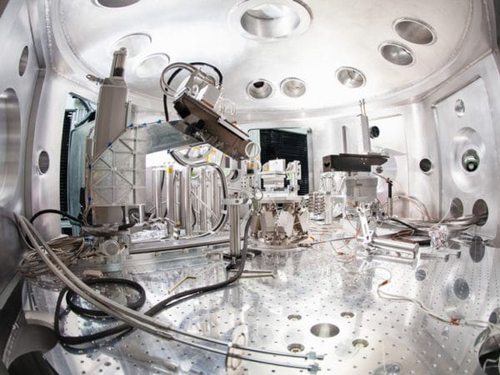
Currently, synthetic diamonds are being formed through controlled demolition. As such, using lasers would be significantly more cost effective and safer as a means to produce these valuable rocks...

Currently, synthetic diamonds are being formed through controlled demolition. As such, using lasers would be significantly more cost effective and safer as a means to produce these valuable rocks.
LSAC beams pales in comparison to Neptune
The far reaches of space have often revealed phenomena that would sound like science fiction when presented in normal contexts. For example, diamond rain may sound a bit loopy when one considers earth, the moon or even Mars or Venus. However, a team utilizing the SLAC national accelerator laboratory at Stanford University have had successes in creating the same situations leading to diamond rain which is a real phenomenon on the planet of Neptune.
According to calculations done, more than 8000 km under the surface of outer planets, like Neptune, the pressure is so great carbon atoms start to come together to form diamonds that then sink further into the ice toward the core of the planet.

LSAC beams pales in comparison to Neptune
The team from Stanford used the plastic material known as polystyrene in order to simulate the same situation of a methane-rich atmosphere. Both the plastic and methane are composed of carbon and hydrogen and carbon molecules. In order to come up with high-pressure conditions that would allow for the same diamond creating situations, the team used SLAC’s matter within extreme situations instrument located within the most powerful x-ray laser, which is the Linac Coherent Light Source. The instrument then combines beams which are emitted through the LCLS with higher power optical laser beams.
Of course, this pales in comparison to what happens in Neptune and Uranus. Researchers believe the scale of the forces which are working in the mantles of Neptune and Uranus are probably enough that the diamonds which are formed may weigh up to millions of karats when placed in the earthly equivalent scales. It may also be possible the solid core of Neptune is coated with a thick diamond layer considering the previous mention of diamonds sinking into the ice slush and proceeding to the core.
Considering Neptune has had sufficient time over which it could build up on diamond reserves, the exercise done by the Stanford team only lasted millionths of a millionth of a second, which is apparently long enough for the process to be observed and recorded.
Looking to the Future
As such the MEC lasers used allowed the team to get data in real time which is something that was not possible earlier considering the conditions needed for the creation of diamonds only lasts fractions of seconds within a laboratory situation. Now that Neptune within the laboratory is a possibility, research on the interiors of other gas giants beckons using the same methods. According to the team leader of the Stanford project, Kraus Dominick, because it was not possible to go inside the planets and look inside of them to find out the way they work, the lab experiments are a complement to the telescope and satellite observations.
The implications of this research also go beyond planets as the researchers would explore if the technique for local uses in the medicinal and commercial sector. Currently, synthetic diamonds are being formed through controlled demolition. As such, using lasers would be significantly more cost effective and safer as a means to produce these valuable rocks.
